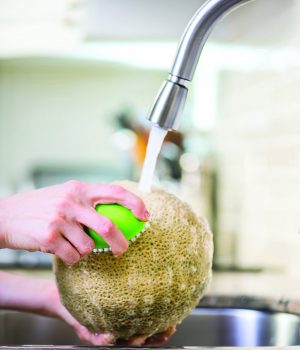(NC) Did you know that about 1 in 8 Canadians get sick every year from foodborne illness? Many of these cases go unreported because symptoms are similar to those of the stomach flu. The most common symptoms are stomach cramps, nausea, vomiting, diarrhea, body aches and fever.
Fortunately, most cases of food poisoning can be easily prevented by following a few simple steps:
1. Clean. Clean anything that comes into contact with food, including your hands, kitchen surfaces and utensils, and reusable grocery bags. Use soap and warm water to wash your hands. You can use an alcohol-based hand sanitizer if soap and water are not available. Fruits and vegetables should also be washed under running water that’s safe to drink.
2. Separate. To avoid cross-contamination, always separate raw foods like raw meat and eggs from ready-to-eat foods like cooked meat and vegetables. Put raw meat, poultry, fish and seafood in sealed containers, or in plastic bags on the bottom shelf of your refrigerator. That way their juices won’t drip onto other food.
3. Cook. Always cook food to a safe internal temperature. You can check this by using a digital food thermometer. Meat, poultry, fish and seafood should be cooked within two to three days of purchase. If you don’t plan to cook it within this time, it should be frozen. Remember, you can’t tell if food is safe by its smell, taste or colour. When in doubt, throw it out.
4. Chill. One of the most important things to remember is to keep cold food cold and hot food hot. This keeps it from reaching the “temperature danger zone” between 4˚C and 60˚C (40˚F and 140˚F). Defrost raw meat, poultry and fish in the refrigerator or the microwave, or immerse it in cold water that’s replaced every 30 minutes. Never defrost at room temperature. Foods defrosted in the microwave should be cooked immediately. Don’t refreeze thawed food.
Find more information online at Canada.ca/FoodSafety.








































